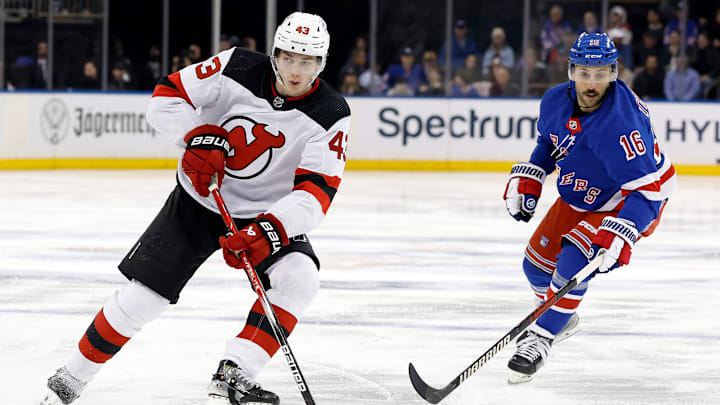The New Jersey Devils' power play has a Luke Hughes problem. Quarterbacking a first-unit power play is one of the toughest assignments for any NHL defenseman. The ones who can do it well are routinely paid at the top of the NHL’s wage scale, for good reason.
Dougie Hamilton, the Devils' highest-paid player, has a contract that pays him $9 million AAV. He was paid that king’s ransom in free agency in part because he’s one of the league’s best power-play quarterbacks. Before he was injured this season, he was first among NHL defensemen with 8.96 points/60 minutes on the power play, and he is tied for second with 1.93 xG/60 (All data cited in this article are courtesy of MoneyPuck).
Unfortunately, the Devils were forced to replace Hamilton’s production when he went down for what looks to be the rest of the regular season. There were always going to be some growing pains with rookie Luke Hughes stepping into Hamilton’s role in quarterbacking the Devils’ power play, but no one could have anticipated the Devils’ power play production to crater this dramatically.
The Devils' power play slumped to 0-23 in February before the recently departed Tyler Toffoli ended the drought against the Kraken. However, it has remained a problem throughout the entire second half, with several cold streaks, culminating in a five-minute power play against the Rangers on Monday night that generated just one shot on goal.
Since Hamilton’s injury, the Devils have turned the reins of their power play over to Luke Hughes, who has played 219 minutes at 5-on-4 this season, the 5th most amongst defensemen behind Roman Josi, his brother Quinn, Cale Makar, and the Canadiens’ Mike Matheson.
From the eye test, Luke Hughes has at times seemed indecisive on the power play. His reaction time is too slow. He defers far too often to his brother, in a way that allows his opponents to easily intercept his passes or pressure the puck receiver.
The biggest problem by far with Luke Hughes’ power play performance is the sheer volume of his shots that are blocked by the opponent. He just simply has not had nearly enough success in getting his shots past defenders at the top of the opponent’s box or diamond.
Hughes leads the league this season in shots of his that were blocked on the power play, with 60. He has only taken 102 shot attempts on the power play all season, so nearly 60% of all of his power play shots have been blocked. Another 12 of those shots missed the net, which means that only 30 of his 102 shots have been on goal. The other shooters that have amassed nearly as many shots blocked are high-volume shooters like Alex Ovechkin, who has taken 157 shots and had just 58 blocked.
The issue of Hughes’ shots being blocked has actually been a problem at all situations, as he has the 5th highest total of shots blocked in the league with 167 of his 314 shot attempts being blocked. The four players in front of him each have at least 100 more shot attempts than him.
The failure is most pressing on the power play, though, where shot volume on net through traffic is so critical. This is especially true in a future playoff run—now unlikely to come this year— when blocked shot totals increase. Hughes hasn’t been horrendous at generating chances on the power play this season; his xG% of 88.9% is 23rd among 48 defensemen with 100 minutes. But he needs to be better to lead a top power-play unit of a Stanley Cup contender.
Travis Greene should consider letting Hughes work through his power play quarterbacking struggles for the remainder of this lost season. Hughes has great potential with his playmaking and vision to be the future QB of the power play when Dougie Hamilton is no longer on the roster. But getting his shots on net through traffic has to be a point of emphasis the rest of the season and in his offseason training.
